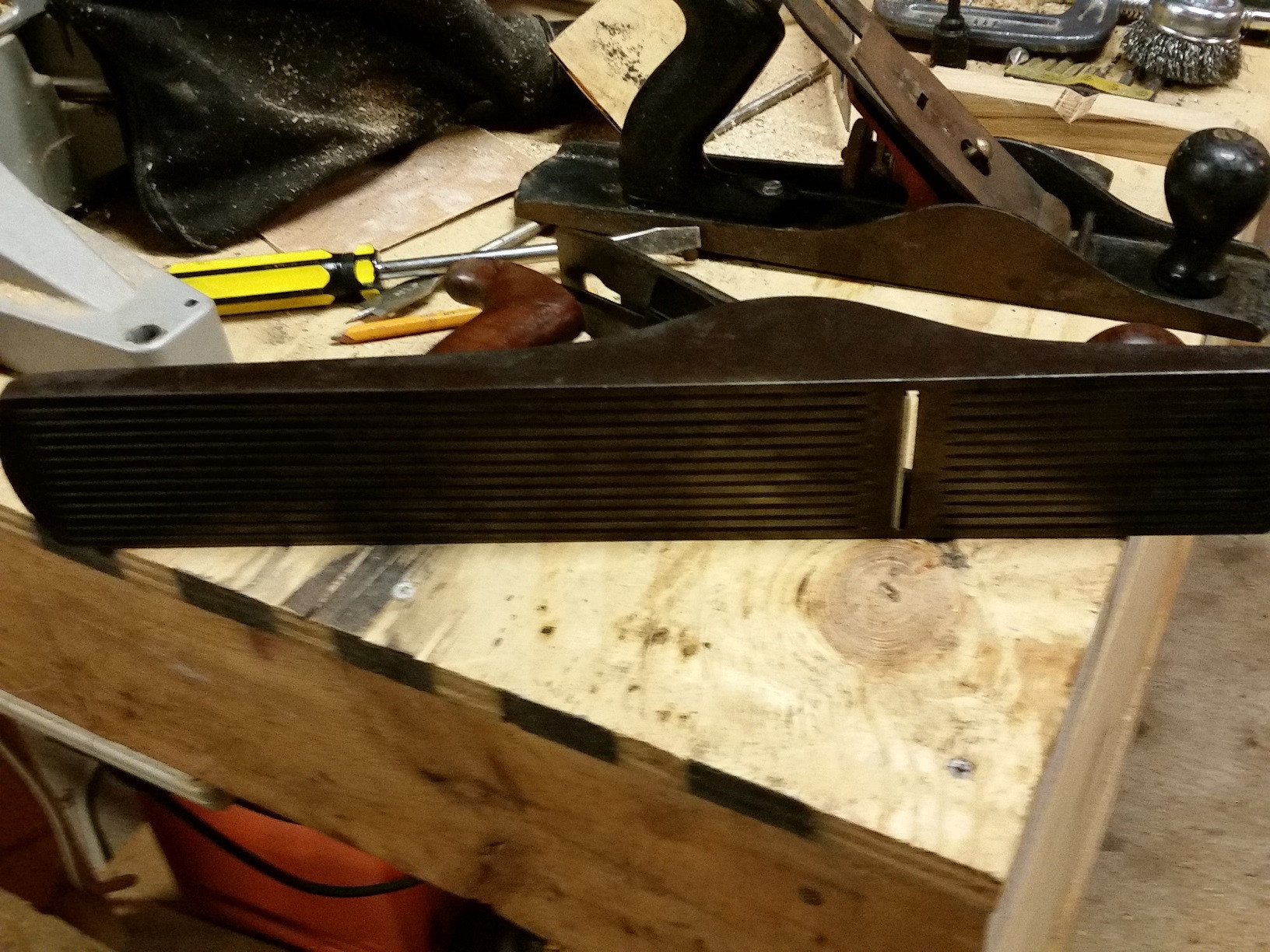What I want to know is how to identify different hand planes to know what I have and if they have any special uses.
Much like grfrazee discusses in his answer
I'm afraid there isn't a good comprehensive site for all of these, so you'll have to do some research on your own for some of the lesser-known makers.
Common/Uncommon Type Breakdown
There could be a lot of bleed over between these categories but I think we could cover some good ground if we look at the different plane types (Although I have never heard this term they can also be called type studies). So that way if you see a plane you can get an idea of its purpose and know whether or not you need it in your collection. Again, this list is not meant to be extensive as there are many other types and some specialty types. The webpage Patrick's Blood and Gore covers them more then we ever could in this format.
Block
These planes are smaller in size (Not to be confused with finger planes which are even smaller) and many can be worked with one hand. Usually easy to spot because of their size and the handle is also usually the cap iron/chipbreaker (at least for metal construction variety.) so you hand, while working the tool, would rest of over the iron. They specialize in end grain.
Jack
Hopefully it is safe to say that this would be one of the most common plane type you will run into. The "Jack of all trades" plane is what you would picture when you think of a plane. Metal ones should have a knob and a tote(handle) and the body would hide the plane iron inside ( as supposed to something like a rabbet plane.). Wooden one might not have a knob but would be about the same length. They are also shorter than a jointer plane but tend to be larger than the smoother. This is a general roughing plane. used before a jointer or a smoother depending on the project.
Jointer
These are some of the easier ones to spot as they are the family of long planes given there nature of true up panel faces and edges. You can expect these to be near or exceeding 20 inches long. The plane in your picture surely is a corrugated jointer plane.
Smoothing
These can be seen as slightly smaller jack planes. As far as metal planes the anatomy of these and jacks are very similar. Smoothing can be also seen in how the blade is sharpened. In that the edges are slightly curved as to prevent making grooves in the work. The blade is sharpened, in such a way, does not solely mean that plane is a smoothing plane. The iron can also be placed at a much higher angle. It is designed to make very fine shavings.
Finger
This one is fairly simple. These are really tiny planes. Some of them are functional but there a number of novelty ones out there. Meant for really detailed work like on carvings.
Rebate/Shoulder
Rebate planes and shoulder planes have the same basic design characteristic. The blade is the same width as the body. The body will have opening on both sides to allow the blade to extend the width of the tool. Rebate/Shoulder are not really tool synonyms while they perform the same function the shoulder plane has a more acute angle so that it can cut end grain better (Like that of a tenon shoulder).
Router
Plane with a large, typically round, sole. Blade can be moved up and down in the mouth of the plane. Modern varieties have can be two knobs for handles. The large sole acts as a fence so the tool can move about in a recess.
Compass
Plane with an adjustable sole that can cut uniform convex and concave surfaces. Adjustable sole is the key identifying feature here which is just a thin plate.
Moudling
These planes are easy to spot as well. There are a wide variety of planes that are called moulding planes. Most blades are not simple rectangular blades with flat edges. Used for making curves, hollows, beads and other more complication moudling cuts. Blades would have the same shape as the cutting edge of modern bits for a powered router. This is huge category.
Scraper
This one works just like a card scraper except that there is a body and handle to hold the card/blade as supposed to free hand. Blade is installed in near vertical position.
Grooving/Plow
Similar type of planes that can be used to cut tongue and groove (Older wooden varieties came in a matched pair) and rabbets. The blades were not that wide and the had fences to govern depth of cut and help run along a boards edge. The tongue blade would have a gap in the center and the matched blade sized for aforementioned gap.
Combination/Universal
If you were to spout the phrase "I like planes and plane accessories" you most definitely own a combination plane. Easy to spot, if the set is near complete, as you will find many additional parts depending on what you want to do with it at any given moment in time.
These planes can usually be identified by the multiple fences and fence attachments. More easily spotted if you see the interchangeable blades. The blades, depending on what is available given the planes manufacturer, would be able to do moulding, rabbeting, beading, ooges, grooves.... the list goes on.
These names are likely different / vary between regions. If another name comes up we should edit the post to cover the varieties.




